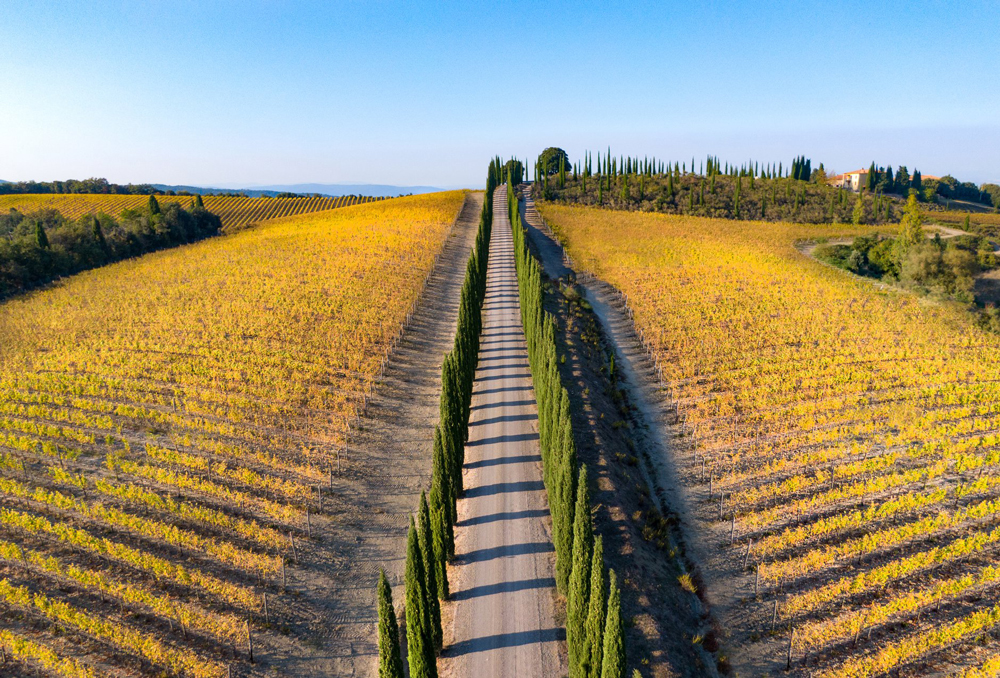
Photo by: Josiah Holwick, ATTA
Tuscany. A place which needs no introduction. With its wine-soaked villages, art-rich cities, swathes of olive groves and truffle fields, and world-famous food, Tuscany epitomizes “la bella vita” or the good life.
100 million tourists visited Tuscany in 2017, with Florence and the more developed rural towns like Siena serving as the most popular destinations. It’s safe to say that Tuscany is not exactly off the beaten path as far as travel goes. But what if I told you there was a way to have the region more or less to yourself? That’s easy. Hop on a bike.
Just as Tuscany offers a proverbial feast of architecture, art, seasonally fresh food, and wine to indulge in, you can also gorge yourself on car-free roads, tiny hilltop towns with cafes and gelaterias for mid-ride stops, and the world-famous strade bianche — paradise for any gravel enthusiast. Tuscany is exactly as fabulous as everyone says it is but even more so when experienced on two wheels.
Last month, I set off in search of my own version of la bella vita Italiana — three weeks of cycling, eating, and drinking my way through Tuscany.
First stop — Lucca. This classic medieval walled city sits in the northwest corner of Tuscany, just over and hour by train from Florence and nestled in the foothills of the Apuan Alps. Touristy? A bit. But this is also local Tuscany — its labyrinth of narrow streets filled with residential properties and tiny restaurants rather than endless ceramic and olive oil shops. And just a five-minute ride outside the center of town gets you into car-free roads through rolling hills and tiny villages.
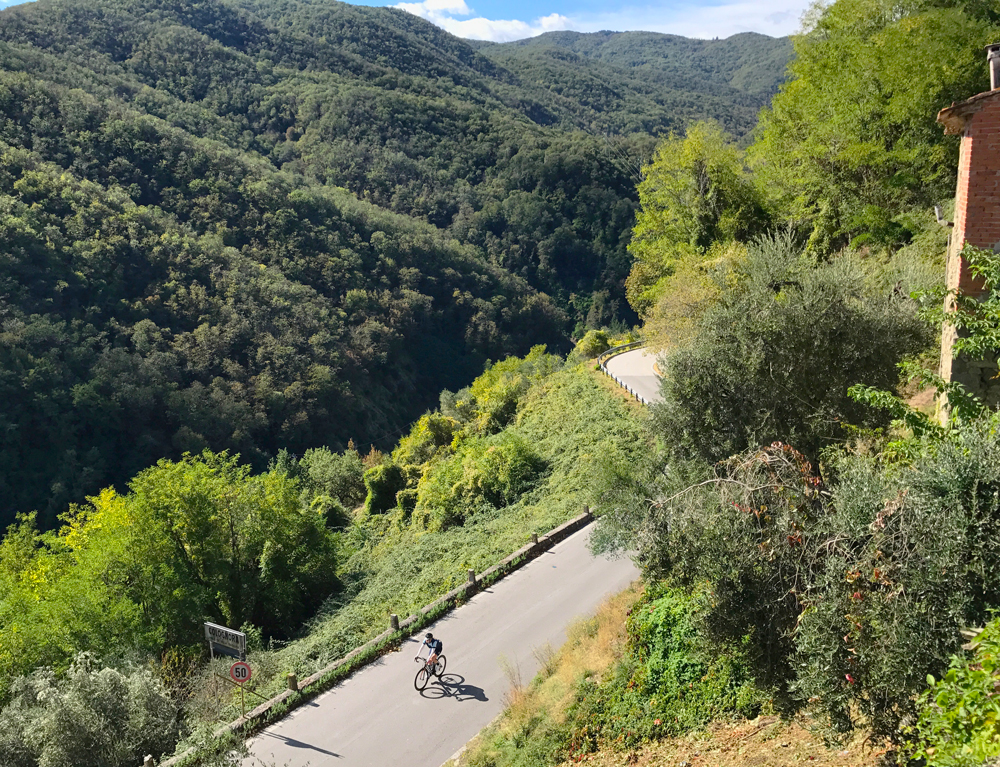
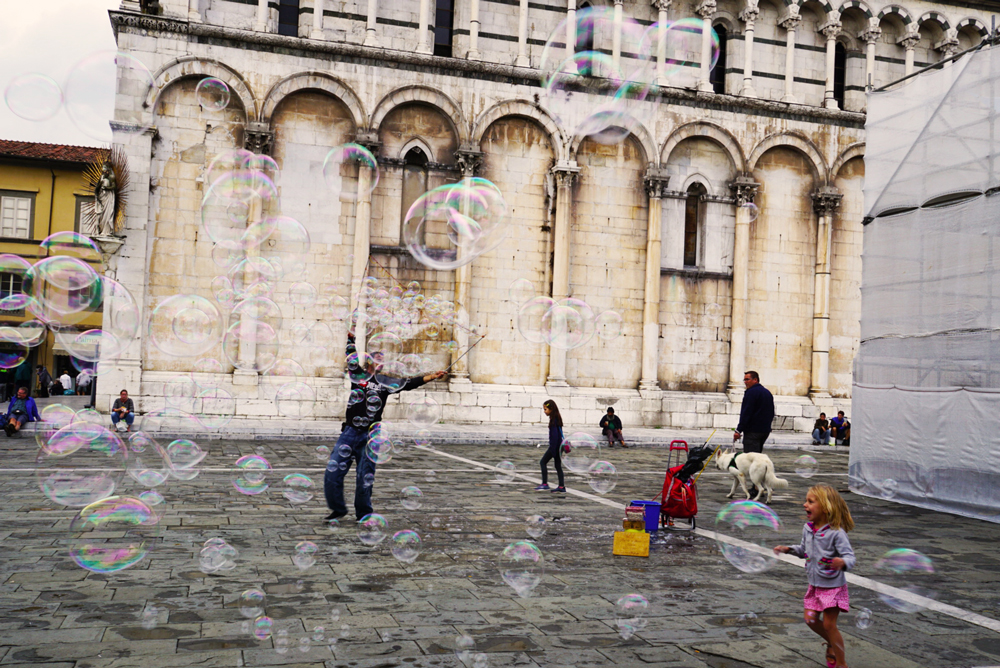
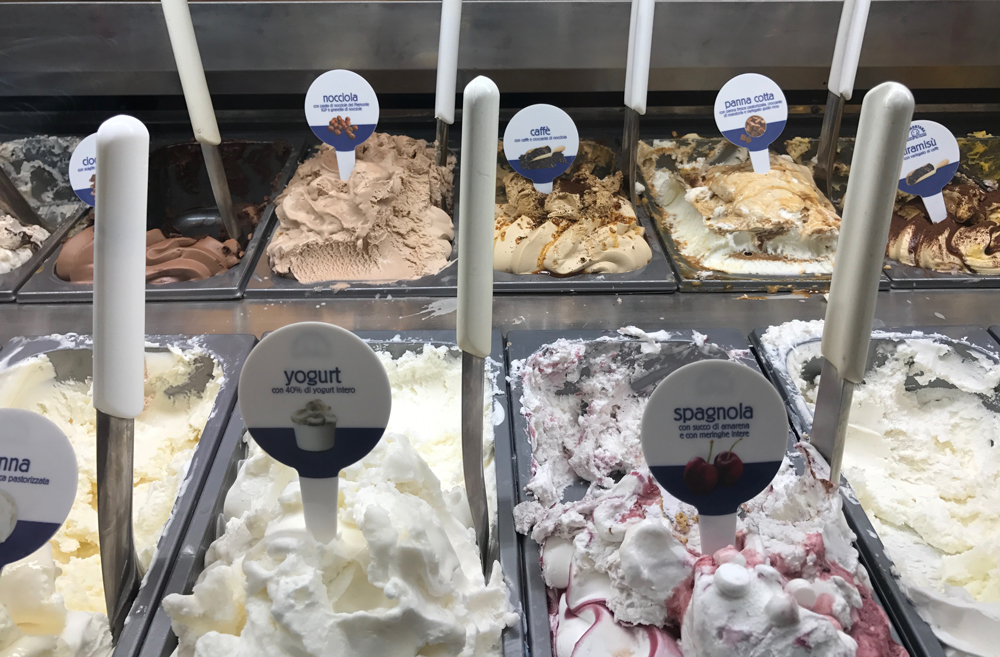
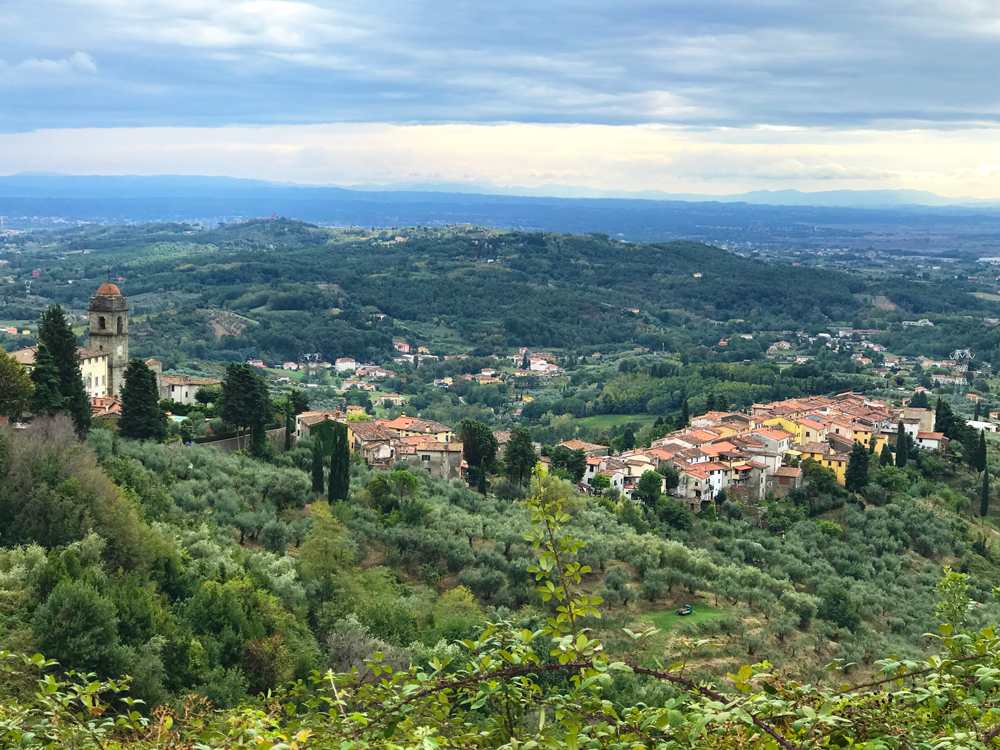
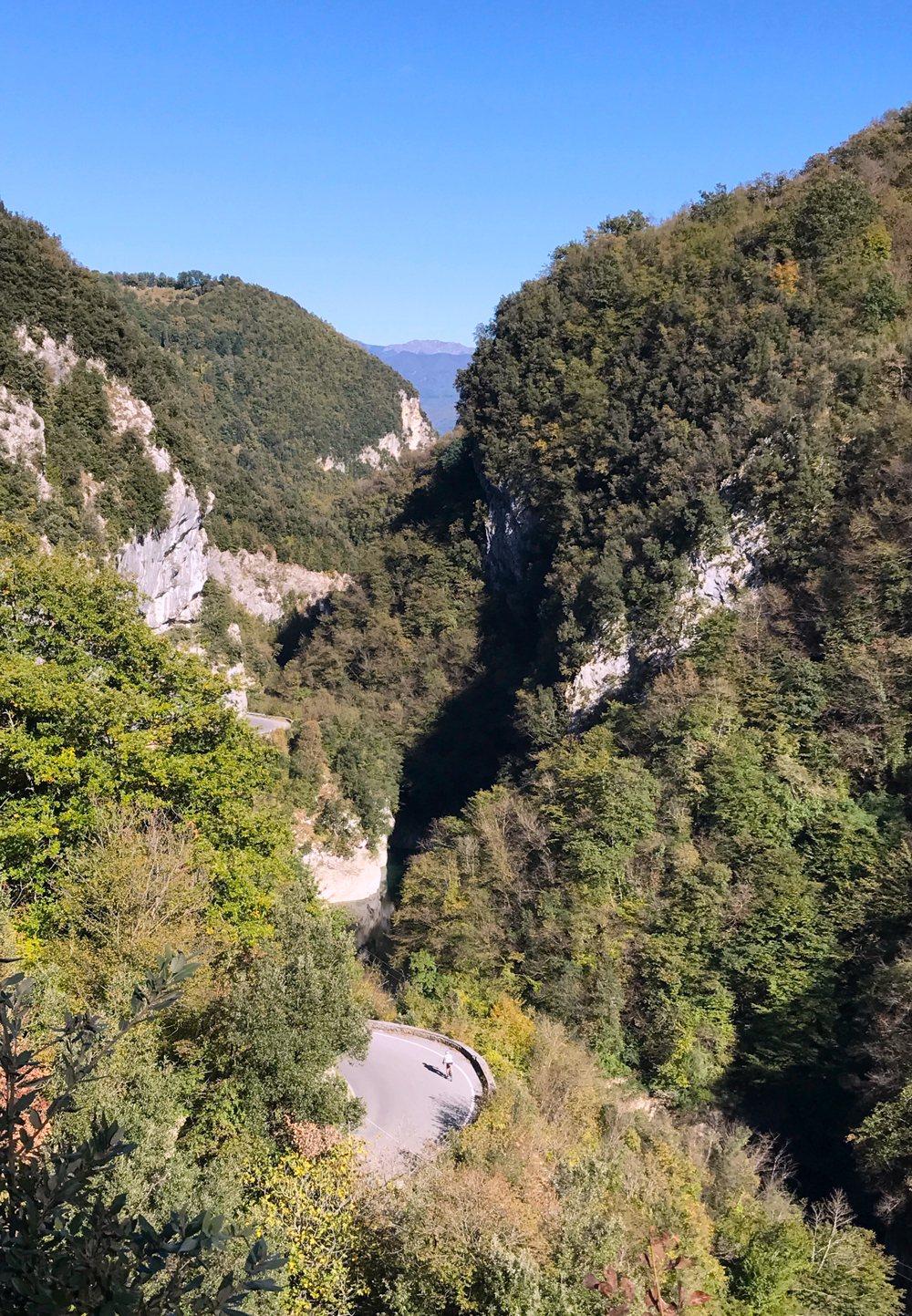
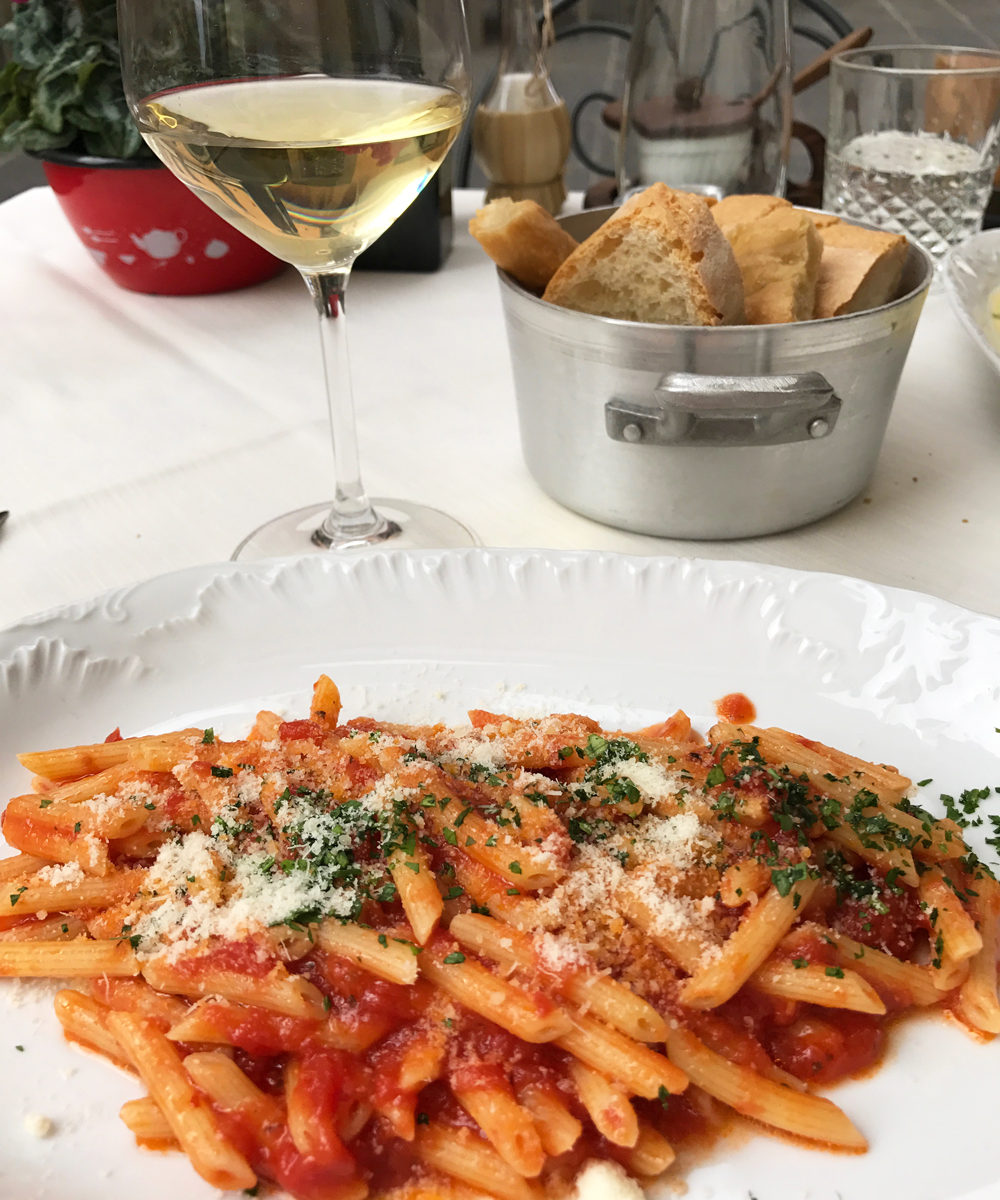


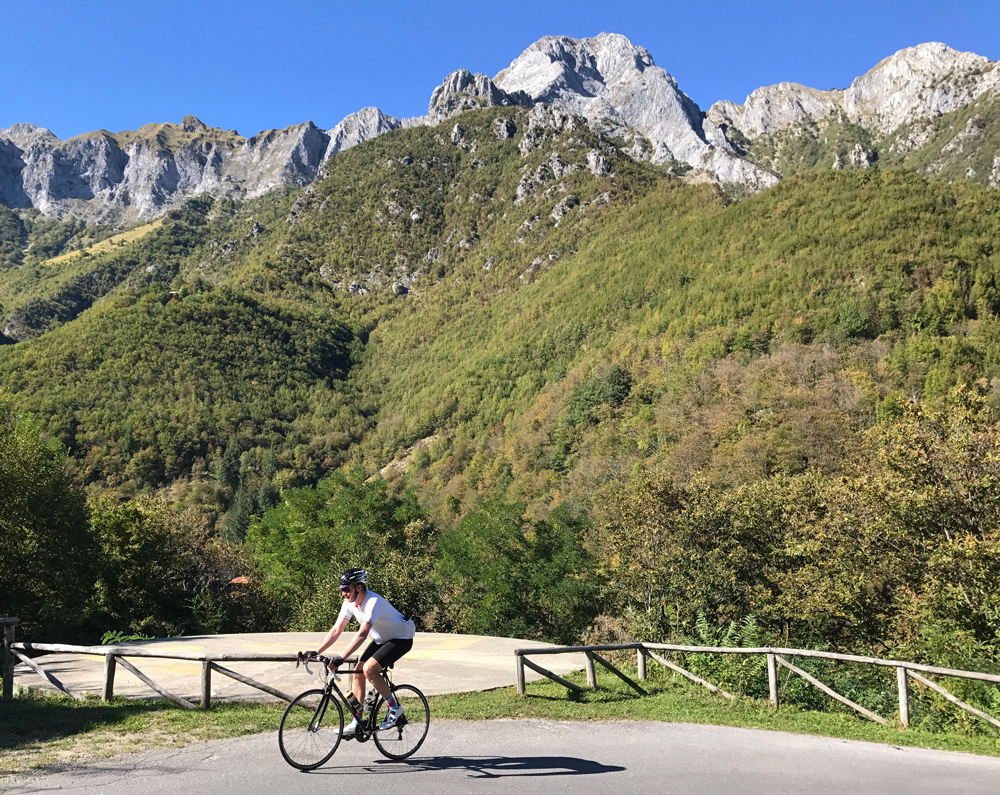
Before the trip, I was fortunate to have made the acquaintance of Alison Testroete. A former pro-cyclist, Lucchesi, and cycling tour guide, she generously put together a list of her favorite rides for us to choose from over the course of the week depending on weather and how we felt each day. Rides with fabulously descriptive names like “Scenic ridge + massive wooden Pinocchio + solid climb + kissing dinosaur bridge” and my favorite “Tired? Ride to Montecarlo for lunch” — a respectable 40 mile ride with a stout climb that ensured you didn’t feel quite so bad about that pasta arrabiata and glass of white wine you scarfed down while sitting outside on the cobblestone streets of yet another hauntingly beautiful Renaissance town, this one completely void of tourists.
Her routes were filled with insider knowledge, tiny roads you would never know how to find without gps guidance, ones not even frequented on Strava. Alison graciously spent one day riding with us, taking us on a classic scenic route before rolling into a secret late lunch spot for some fresh, handmade pasta and prosecco to celebrate a great day on the bike.
A few days recovery in my own personal Inferno that is central Florence in high season was enough to spur me further down into the depths until I was spat out again in paradise — this time the Val D’Orcia.
This UNESCO World Heritage region is postcard Tuscany. Rolling fields of golden hay punctuated by cypress-lined white gravel roads. Olive orchards and vineyards abound. The view from every window is Instagram-worthy.
I had signed up for a week of cycling based out of Pienza with local tour company Cicloposse. Dubbed the ideal city of the Renaissance, this hilltop village of less than 2,000 people was built in the traditional 12th century style — a castle, fortifications, and a church on the main square. Not atypical for all of Tuscany but its location makes it extraordinary. This prodigious producer of pecorino sheep’s cheese, sits like a balcony surveying the Val d’Orcia.
Our lead guide for the week was Luigi Gamba, aka Gigi — a lean, mean cycling machine and gregarious, expressive Italian. Each morning we would watch him describe our route using wild hand gestures that only an Italian can make.
“Eat and drink. Eat and drink,” he said as he gesticulated the steep climbs and descents of our chosen route for the day.
There are really only two types of riding in Tuscany — you are either cycling up or down. And one always follows the other.
Up, down, eat, drink.
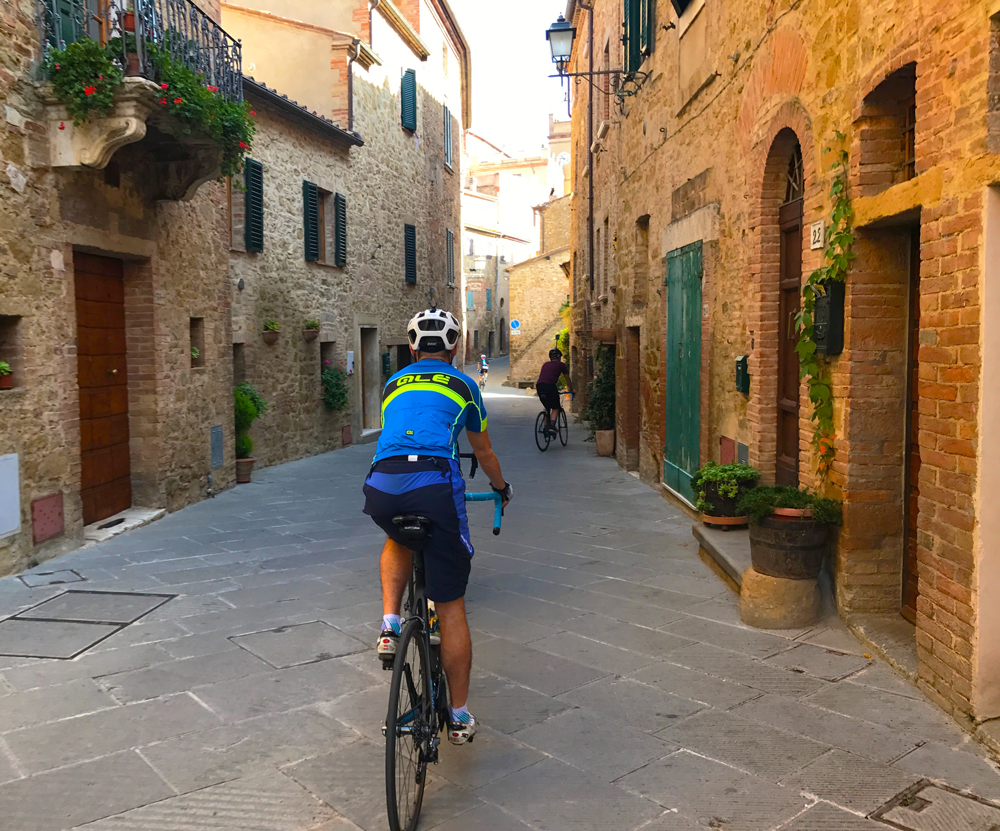
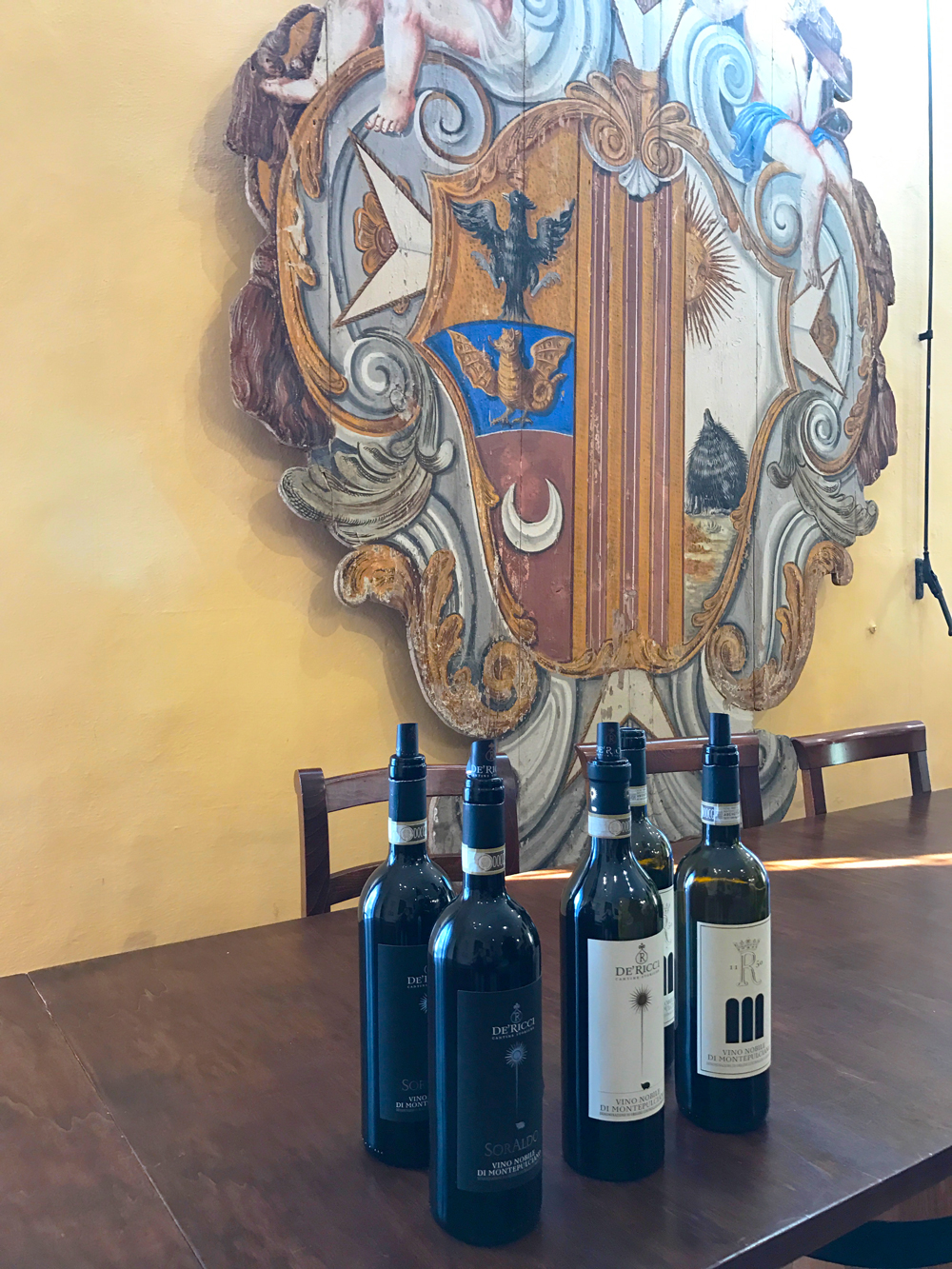
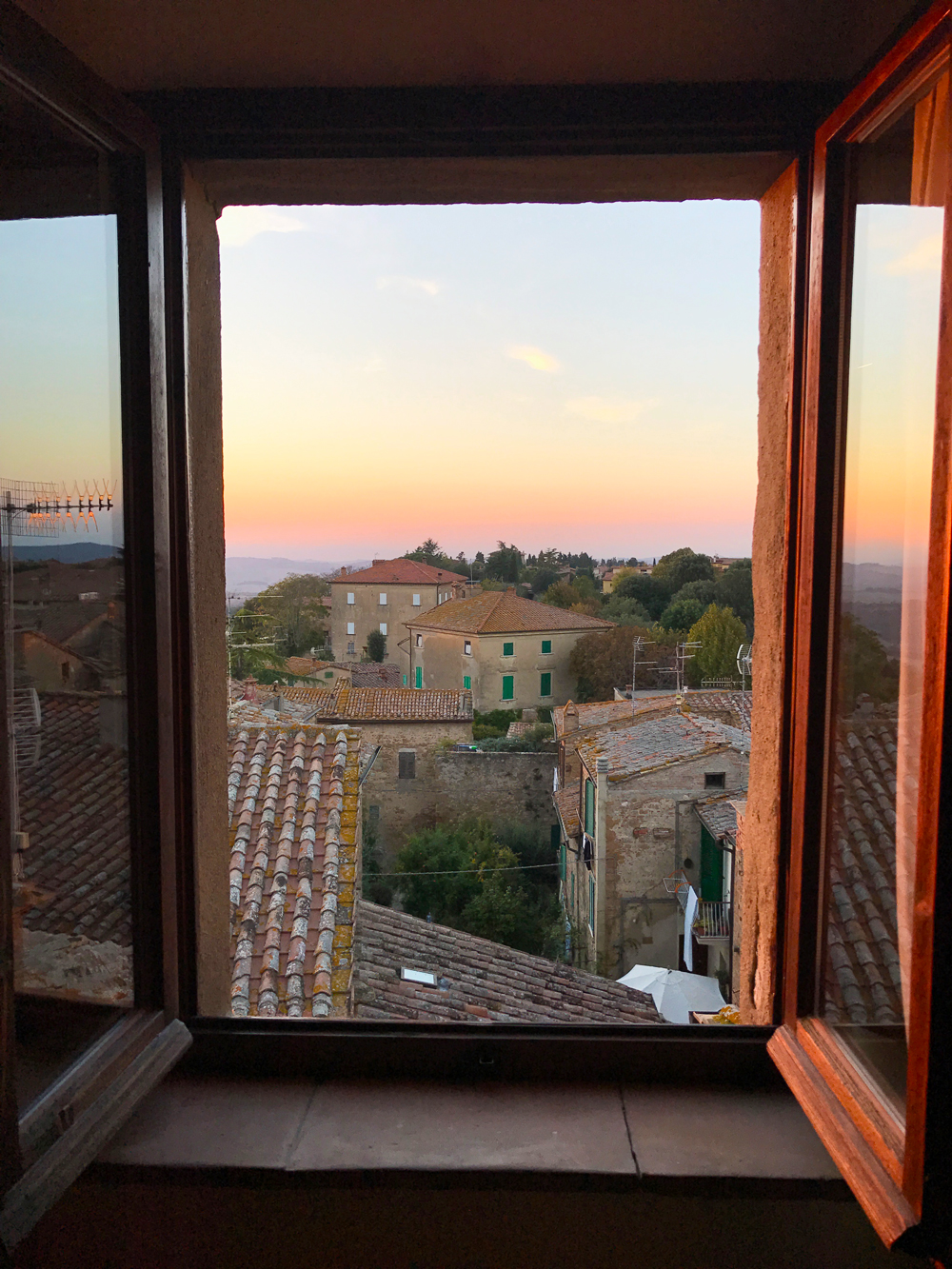
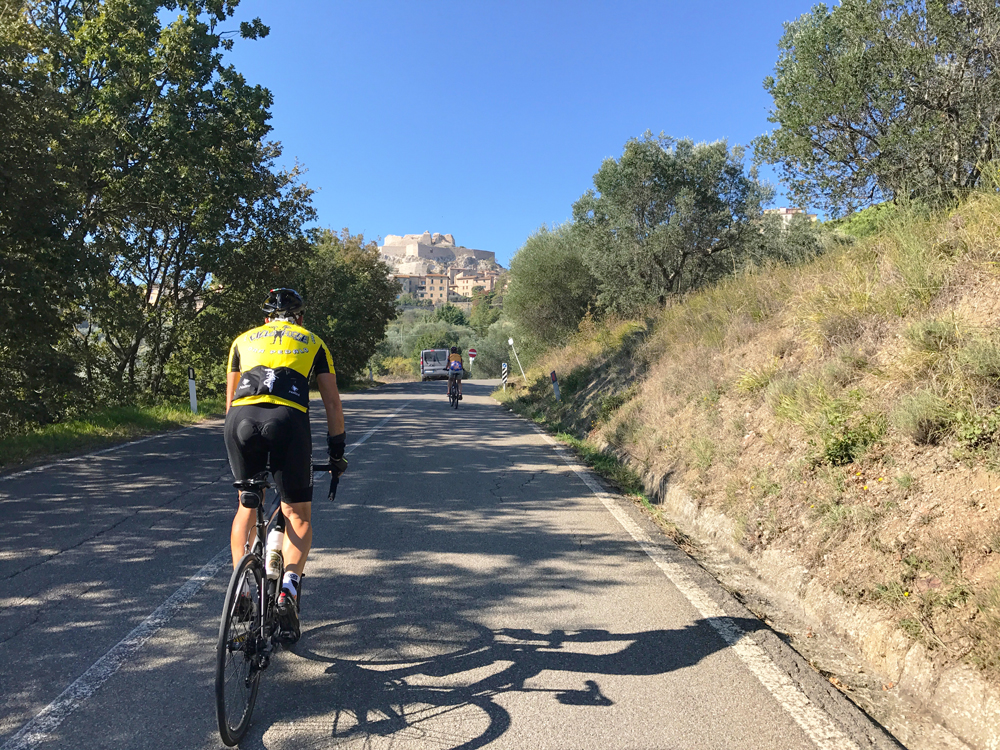
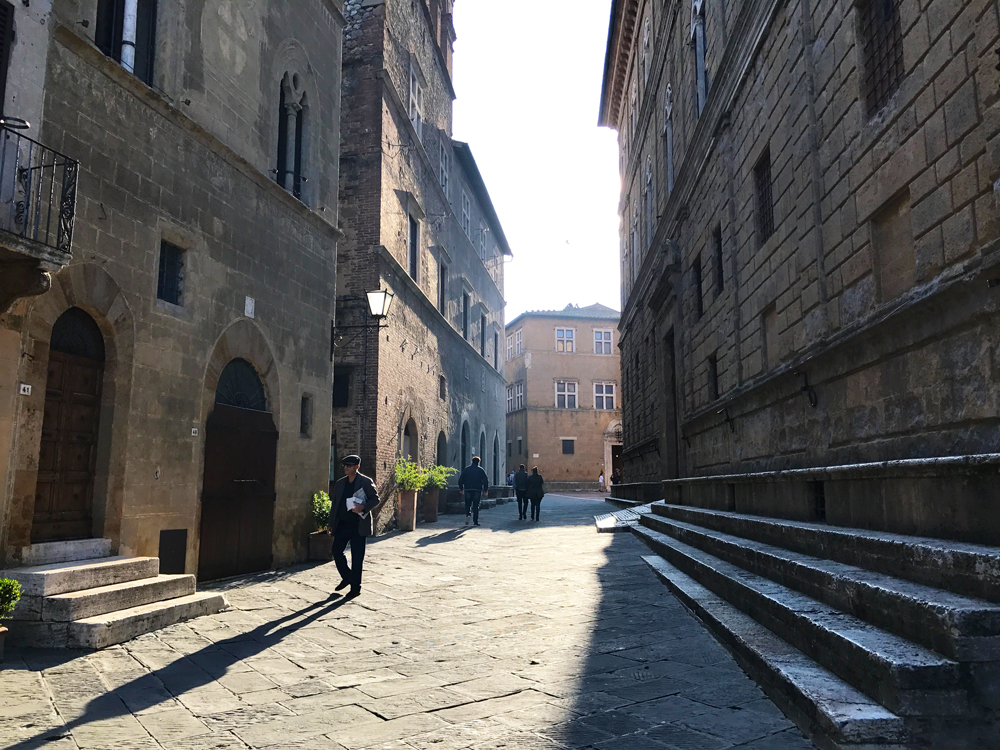
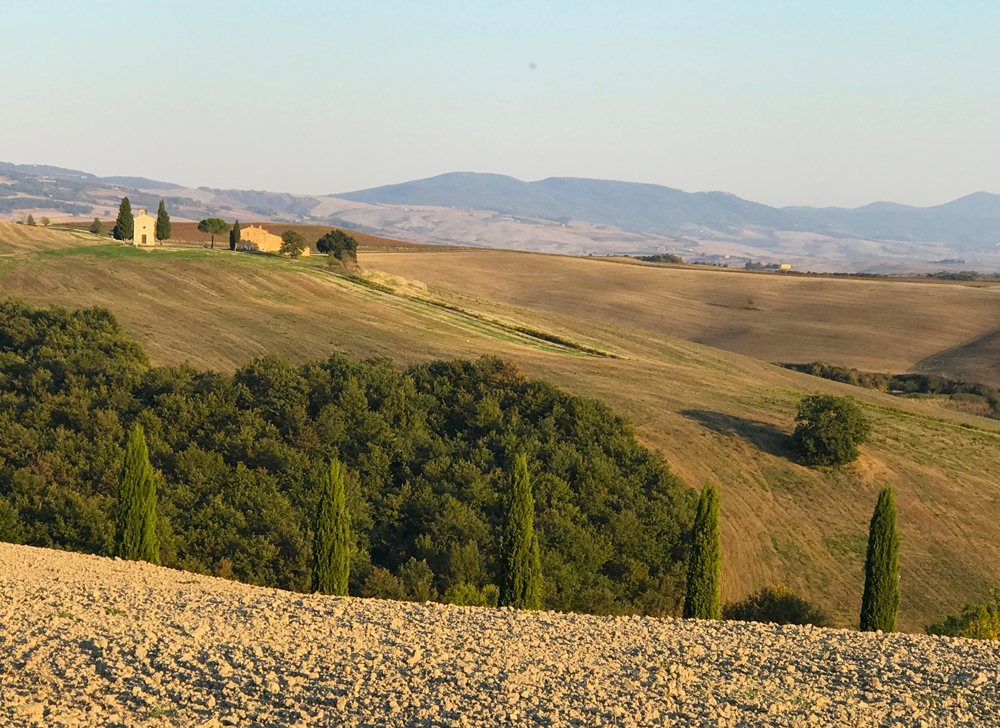
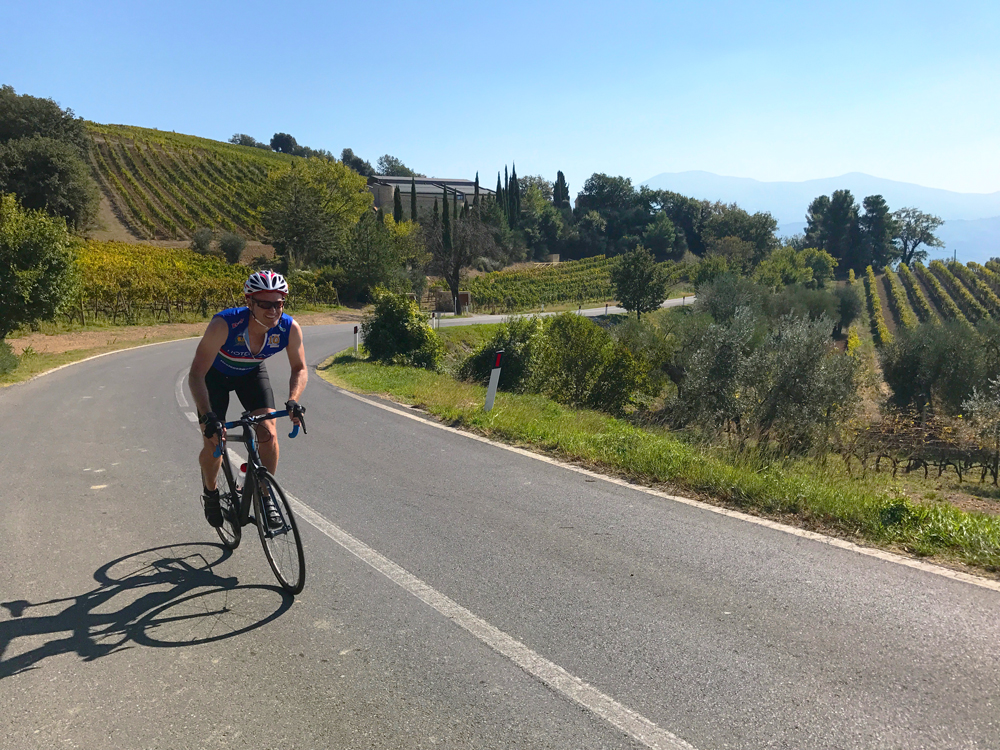
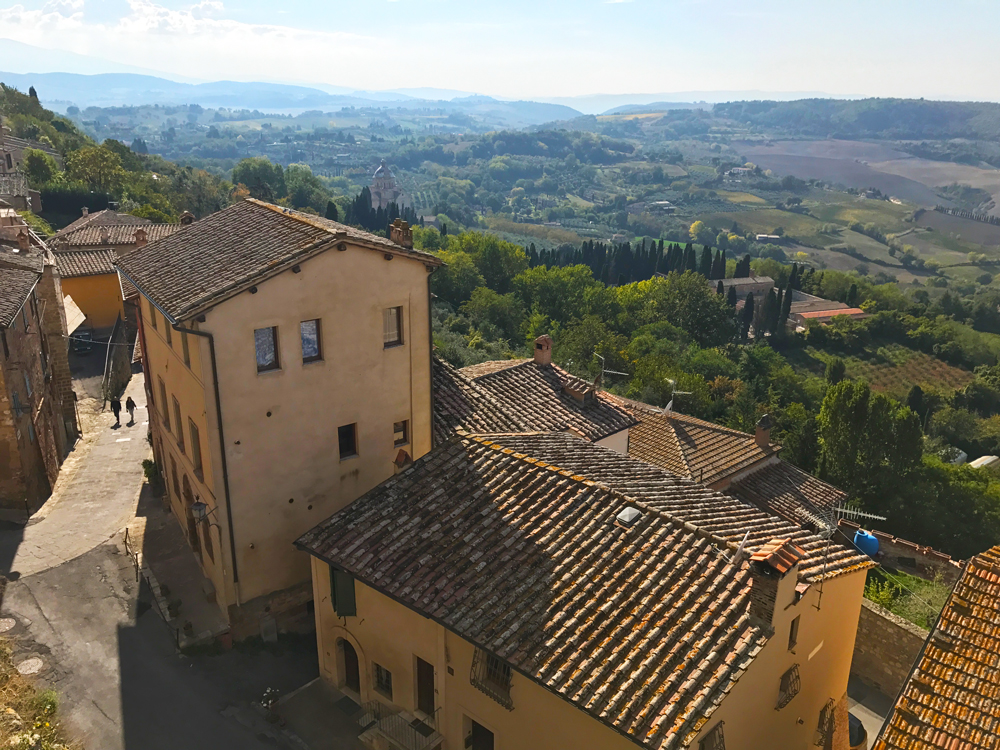
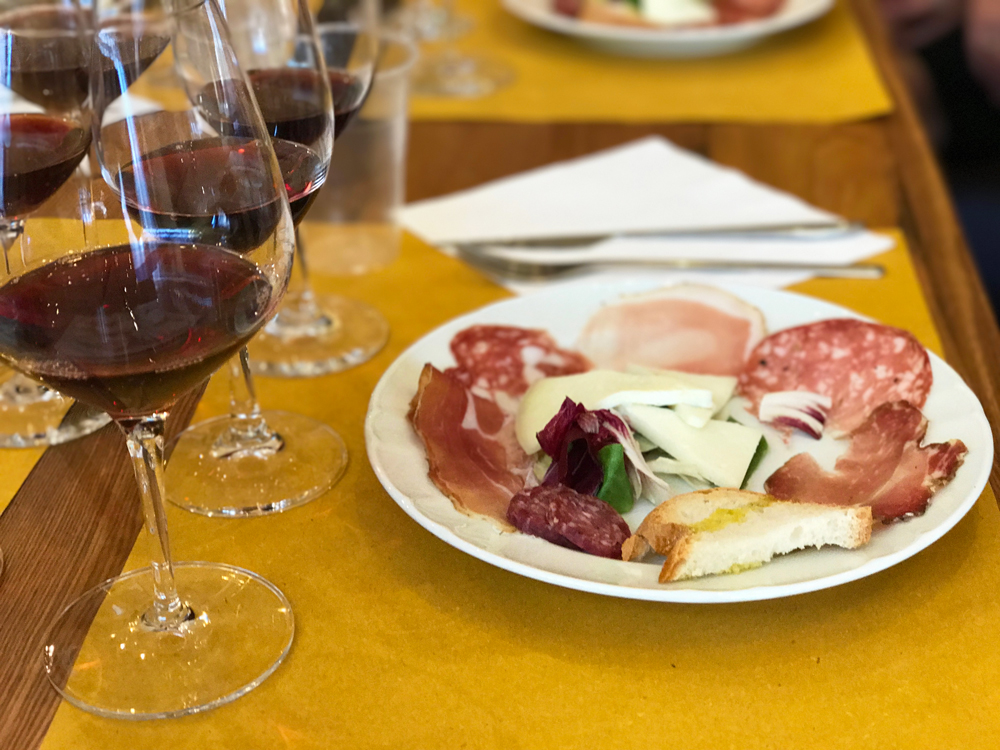
Mornings started with a doppio espresso out on the large veranda of the Relais Il Chiostro di Pienza, watching as the rose-colored rays of morning lit up the fog rolling across the patchwork hills below. Then we would hop on our bikes in search of the classic medieval hill towns of the Val D’Orcia. Towns like Montalcino and Montepulciano that craft some of Italy’s finest red wines. This meant of course that after a few hours of riding up and down the hills of Tuscany, perhaps with a stop for an espresso along the way, we would arrive at said town for some wine tasting accompanied by a gastronomic feast, sometimes two.
The courses came. And came. The wine glasses refilled. And it was all divine. Pici al cinghiale — hand-stretched, eggless pasta topped with a sumptuous ragu of wild boar. Brunello risotto. Prosciutto dipped in melted pecorino and white truffles.
As we sat, drank, and ate, it was all about the here and now. No politics. No deadlines. No pressures of the outside world. We were Tuscany. It was another beautiful day.
By that point I had decided to accept the beautiful rolling hills of life and embrace my ever-expanding muffin top. Time to snack on some more salami. Or linger over an espresso before strolling the earthen-hued streets while savoring a gelato. Or perhaps a nap.
All of these seemed like honorable options until we were jolted back to reality with the daunting realization there were still 20-30 hilly miles of riding between us and our home base in Pienza.
Up, down, eat, drink.
Just like Tuscan food, the perfect adventure for me is a sum of simple, yet quality ingredients — a little exercise, fresh air, something to eat, something to sip, and people to share it with. At the end of each day we marveled at our fortune.
After the Val D’Orcia, I had signed up for one last Tuscany-on-two-wheels adventure — this time with Cycle Europe on a ride from the thermal spa town of Montecatini Terme to the towers of San Gimignano in Chianti.
At the end of a meal, Italians ask the question “sei a posto?” inquiring into whether or not you have had enough.
As I saddled up early that morning, after three weeks of what some would call overindulging on la bella vita italiana, I thought this may be the day that I finally replied, “basta” or no more.
But as soon as we got rolling, I realized that much like gelato, you can never have too much Tuscany.
IF YOU GO
Guide Services
Lucca Cycling Club: The essence of Lucca Cycling Club is to ensure you have the best cycling experience in Tuscany — whether that is with guided rides or self-guided routes. Alison and her team of guides will challenge you, but not push you beyond your limits. They know where to ride, where to eat, and where to find the best gelato. Alison is a kindred spirit, a person who sees the bike as a way of achieving personal peace, a way to quiet the mind. Our trip to Lucca would not have been the same without her guidance.
Cicloposse: I can’t rave enough about the fabulous Cicloposse team — we had the trip of a lifetime. Now in their 25th year of operation, the company offers everything from self-guide tours to guided active gourmet tours with cooking classes at the end of each day. Cicloposse sources their own top-of-the-line carbon fiber road bikes and offers Scott e-bikes for those that may want a little help with the Tuscan hills.
Cycle Europe: Going strong since 1972, Cycle Europe offers self-guided bike tours across in Italy, France, Croatia, and Portugal. You pick the dates and the itinerary and they’ll do the rest. They can also organize a guided group tour for you in Italy, France, Spain, Portugal, Austria, Germany, Croatia, Denmark, and Eastern Europe.
Wine Tasting
Corte Pavone by Loacker Wine Estates: The top photo is Corte Pavone. If that alone doesn’t entice you to go to this institution of Brunello di Montalcino, then take into consideration that they are a completely organic and even biodynamic winery and just imagine how great their wines taste.
Cantina De’Ricci: Built atop Etruscan caves in the center of Montepulciano, the Cantina is the perfect place to sample some of the best Vino Nobile di Montepulciano. But first, be sure to descend the monumental equestrian staircase, with its impressive brick texture, deep down into the cellar to explore.
Where To Eat
La Bandita Townhouse: Tucked away in a tiny street of Pienza, this restaurant and wine bar features an open kitchen so you can see the master chef at work. The fresh tagliatelle with pecorino pesto will change your life. Not to mention the perfectly cooked Chianina beef. And don’t forget to save room for the light and airy deconstructed tiramisu.
Porta di Bacco: Near one of the main entrance gates to the historic center of Montepulciano, this osteria serves up fresh, seasonal, and regional dishes. Accompanied by some fabulous Montepulciano wines of course.
La Cantina de La Porta: Located in the tiny medieval hilltop town of Monticchiello, this modern restaurant offers refined versions of the Tuscan classic, with a wine list to die for.


Amy, you’re awesome. Thank-you!!